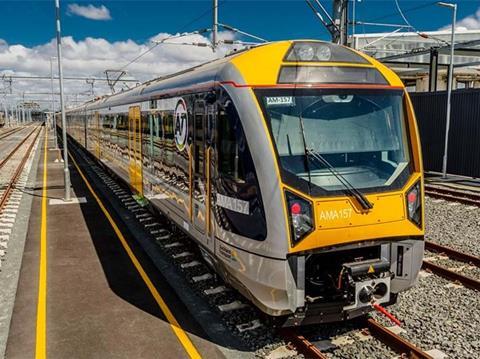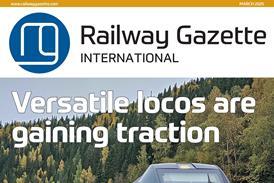
NEW ZEALAND: Rail has been allocated a NZ$1·1bn share of a NZ$6·8bn package of transport infrastructure funding announced by the government on January 29.
Transport Minister Phil Twyford said the rail investment was targeted at getting lorries off the roads and improving passenger services, particularly at busy times.
‘This programme brings forward and funds significant projects, allowing them to be built sooner’, he said. ‘The package is designed to give the construction industry certainty and confidence about future work.’
The projects to be funded include the provision of a third track between Westfield and Wiri in Auckland, where the route is shared by commuter trains and freight trains serving the ports.
Electrifying the line from Papakura to Pukekohe will eliminate the need for passengers to switch to and from diesel trains, speeding up journeys to support a growth in commuting, while the provision of two additional platforms at Pukekohe will accommodate future growth. New stations with park and ride facilities at Drury Central and Drury West will provide more transport options for people moving to the area.
A series of enhancements in Wellington are intended to make the lines to the north more reliable and better able to meet growing demand. Two passing loops will be provided on the Wairarapa line, along with a second platform at Featherston.
The funding adds to NZ$96m announced last year for the removal speed restrictions on the Wairarapa line, and NZ$70m for track and signalling works on the approaches to Wellington station. Commuter rolling stock stabling facilities will be built in Wellington, Levin and Masterton.
In addition, NZ$15m will be spent refurbishing ex-Auckland Transport coaches with new interiors, seats, and toilets for use on the Capital Connection service between Palmerston North and Wellington.
The latest funding announcement was welcomed by national railway KiwiRail.
‘These are exciting times for rail’, said Chief Executive Greg Miller. ‘Work in Auckland starts immediately, and will be completed in about four years. We’re delighted to have a continuum of funding that will enable us to plan and to recruit. This will also enable us to open our doors for cadets and apprentices.’




















